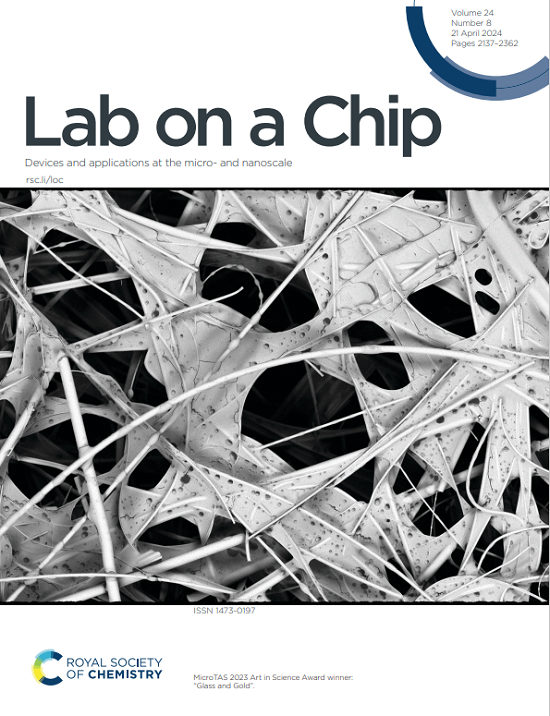模拟肺动脉血管调节的内皮-平滑肌显微计
IF 5.4
2区 工程技术
Q1 BIOCHEMICAL RESEARCH METHODS
引用次数: 0
摘要
肺动脉高压(PAH)是一种无法治愈的毁灭性疾病。PAH的发病机制涉及内皮功能障碍和血管张力失调,导致肺动脉逐渐变窄,增加血流动力学阻力和血压。由于动物模型的局限性和缺乏能够概括平滑肌细胞收缩性的内皮依赖性调节的人源化体外系统,阻碍了PAH有效治疗方法的发展。在这里,我们微型制造了肺动脉平滑肌微计(PA-SMUGs),可以量化人体肺动脉平滑肌细胞(PASMCs)在含有功能单层肺动脉内皮细胞(PAECs)的微组织中产生的收缩力。pa - smug表现出paec依赖性血管松弛,并对treprostiil(一种临床批准的PAH治疗药物)有反应。该平台建立了一种高通量的方法来量化ec依赖性血管松弛,将促进PAEC-PASMC串扰在PAH发病机制中的作用的机制研究,并使筛选新的治疗方法能够更广泛地改善PAH的预后和高血压疾病。本文章由计算机程序翻译,如有差异,请以英文原文为准。
Endothelial-smooth muscle microgauges for modeling pulmonary arterial vasoregulation
Pulmonary arterial hypertension (PAH) is a devastating disease for which there is no cure. The pathogenesis of PAH involves endothelial dysfunction and dysregulation of vascular tone, resulting in progressively narrowing pulmonary arteries that increase hemodynamic resistance and blood pressure. The development of effective therapeutics for PAH is hindered by limitations to animal models and a lack of humanized in vitro systems that recapitulate endothelial-dependent regulation of smooth muscle cell contractility. Here, we microfabricated pulmonary artery smooth muscle microgauges (PA-SMUGs) that enable quantification of contractile forces generated by human pulmonary arterial smooth muscle cells (PASMCs) within microtissues that contain a functional monolayer of pulmonary arterial endothelial cells (PAECs). PA-SMUGs demonstrate PAEC-dependent vasorelaxation and respond to Treprostinil, a clinically approved PAH therapy. This platform, which establishes a high-throughput method for quantifying EC-dependent vasorelaxation, will facilitate mechanistic studies into the role of PAEC-PASMC crosstalk in PAH pathogenesis and enable screening for novel therapeutics to improve PAH outcomes and hypertensive diseases more broadly.
求助全文
通过发布文献求助,成功后即可免费获取论文全文。
去求助
来源期刊

Lab on a Chip
工程技术-化学综合
CiteScore
11.10
自引率
8.20%
发文量
434
审稿时长
2.6 months
期刊介绍:
Lab on a Chip is the premiere journal that publishes cutting-edge research in the field of miniaturization. By their very nature, microfluidic/nanofluidic/miniaturized systems are at the intersection of disciplines, spanning fundamental research to high-end application, which is reflected by the broad readership of the journal. Lab on a Chip publishes two types of papers on original research: full-length research papers and communications. Papers should demonstrate innovations, which can come from technical advancements or applications addressing pressing needs in globally important areas. The journal also publishes Comments, Reviews, and Perspectives.
 求助内容:
求助内容: 应助结果提醒方式:
应助结果提醒方式:


